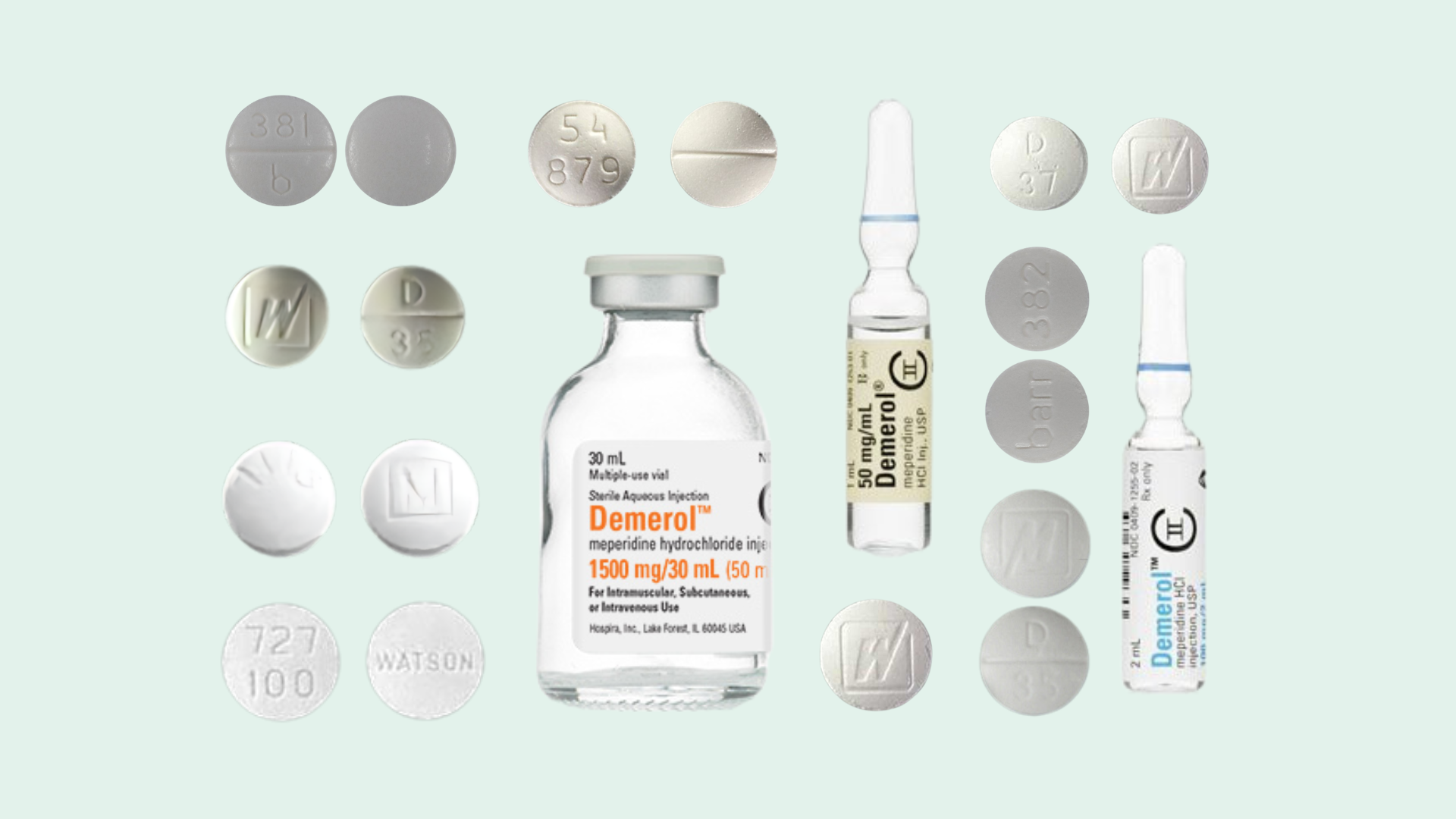Understanding Demerol
Demerol, also known as meperidine, is a Schedule II controlled substance due to its addictive properties. It interacts with opioid receptors in the central nervous system, altering pain signaling and perception. The pharmacological effects of Demerol can cause changes in
- Mood
- Levels of consciousness
- Visual disturbances
- Gastrointestinal issues
Other physiological effects may include
- Dry mouth
- Diminished cough reflex
- Dilated blood vessels
- Low blood pressure
- Skin flushing and itching
- Sweating
- Respiratory depression
What Organs Are Affected by Demerol Abuse?
Demerol abuse can negatively impact many organs and bodily functions. Here’s a breakdown of some of the most affected areas:
- Central Nervous System (CNS): Demerol, like other opioids, affects the CNS by binding to opioid receptors. This disrupts communication between nerves, leading to slowed breathing, drowsiness, impaired coordination, and potentially coma or respiratory depression in severe cases.
- Respiratory System: One of the most serious risks of Demerol abuse is slowed breathing (respiratory depression). This can lead to a lack of oxygen reaching the brain and other organs, potentially resulting in coma or death.
- Liver: Chronic Demerol abuse can damage the liver, leading to conditions like hepatitis and liver failure.
- Gastrointestinal (GI) System: Demerol can cause constipation, nausea, vomiting, and stomach cramps.
- Cardiovascular System: Demerol abuse can increase the risk of heart problems, such as irregular heartbeat and heart attack.
What Are Demerol Withdrawal and Side Effects Like?
When a person becomes dependent on Demerol, quitting the drug or reducing its dosage can lead to withdrawal symptoms. These symptoms can vary depending on factors such as the duration and dosage of Demerol use, the presence of other substances in the user’s system, and their overall mental and physical health. Demerol withdrawal symptoms can include
- Anxiety
- Agitation
- Insomnia
- Restlessness
- Nausea
- Vomiting
- Runny nose
- Muscle aches
- Sweating
- Chills
- Dry mouth
- Increased blood pressure
- Hallucination
What Is the Demerol Withdrawal Timeline?
The timeline for Demerol withdrawal can vary from person to person, but most individuals begin experiencing symptoms within the first 24 hours after their last dose. Withdrawal can start as quickly as three hours after quitting for some individuals. There are two phases of Demerol withdrawal: acute withdrawal and post-acute withdrawal syndrome (PAWS). Acute withdrawal typically lasts for 3 to 10 days and is characterized by intense symptoms. Any symptoms lasting longer than 10 days are considered PAWS, which can last up to 24 months but gradually diminish over time.
The Demerol withdrawal timeline can be summarized as follows:
- First 24 hours: Symptoms typically begin 3 to 24 hours after the last dose. Anxiety, irritability, physical discomfort, and nausea are usually the first symptoms to present. Cravings and urges to use Demerol may be strong.
- Day 2 through 5: Withdrawal symptoms tend to peak during this period. Individuals may feel uneasy, alarmed, or fearful. Physical symptoms such as sweating, muscle aches, nausea, and vomiting may become more pronounced. Cravings for Demerol may intensify.
- Day 6 through day 14: Symptoms begin to fade over the next week or two. Any remaining symptoms should be mild. At this point, acute withdrawal has ended, and PAWS has begun.
- Days 15+: Cravings for Demerol may persist, but most other symptoms, including inability to feel pleasure, decreased appetite, restlessness, irritability, anxiety, depression, poor concentration, mood swings, lack of motivation, and poor sleep patterns, should subside.
What Is Demerol Detox Like?
To safely and effectively manage Demerol withdrawal, individuals are advised to undergo detoxification in a medical setting. Medical detox provides 24-hour care and supervision from healthcare professionals who can monitor and manage withdrawal symptoms. During Demerol detox, doctors may taper off the individual’s dose of Demerol over a period of several weeks. In some cases, they may switch the individual to a different medication, such as buprenorphine, to help alleviate withdrawal symptoms and reduce the risk of relapse. This is known as medicated-assisted treatment (MAT).
Several medications are available for MAT. Two medications commonly used to treat Demerol withdrawal are Suboxone and Subutex. These medications contain buprenorphine, a partial opioid agonist that helps stabilize individuals in withdrawal, minimize symptoms, and reduce cravings. Suboxone also contains naloxone, an opioid antagonist that blocks the euphoric effects of opioids and reduces the risk of relapse.
What Happens Next?
After completing detox, individuals are encouraged to continue their treatment journey to address the underlying causes of their addiction and develop strategies for long-term recovery. Inpatient and outpatient treatment programs are available to support individuals in their recovery process. Inpatient programs provide a controlled environment with 24-hour supervision, while outpatient programs offer flexibility for those who cannot commit to residential care.
Treatment for Demerol addiction often involves a combination of therapies, such as individual counseling, group therapy, behavioral therapies, and support groups like Narcotics Anonymous. These programs help individuals address the psychological and emotional aspects of their addiction, learn coping skills, and develop a relapse prevention plan.
It is important for individuals in recovery to have a strong support system in place, whether it be through family, friends, or support groups. After completing formal treatment, ongoing support and aftercare services can help individuals maintain their sobriety and navigate the challenges of life without Demerol.

